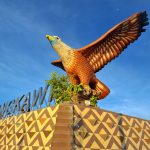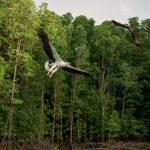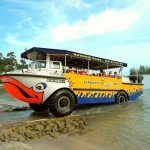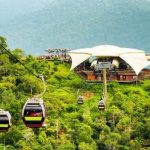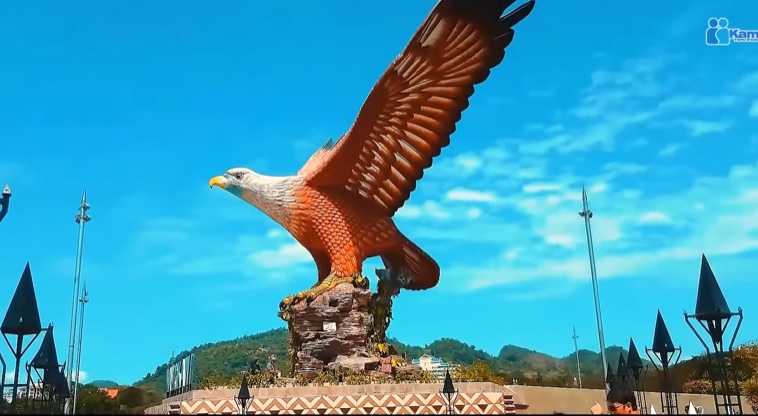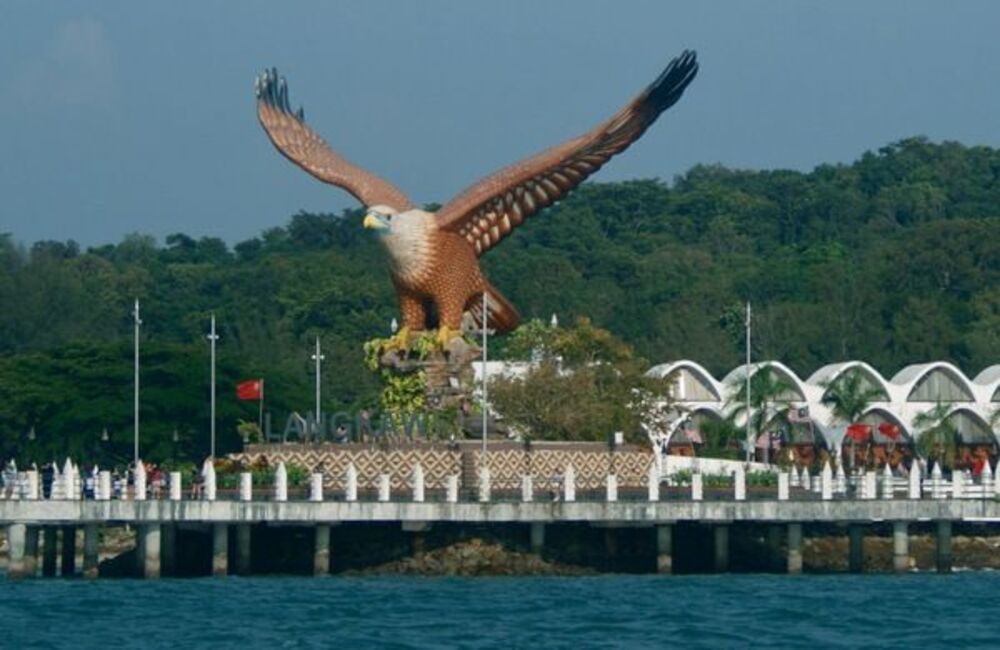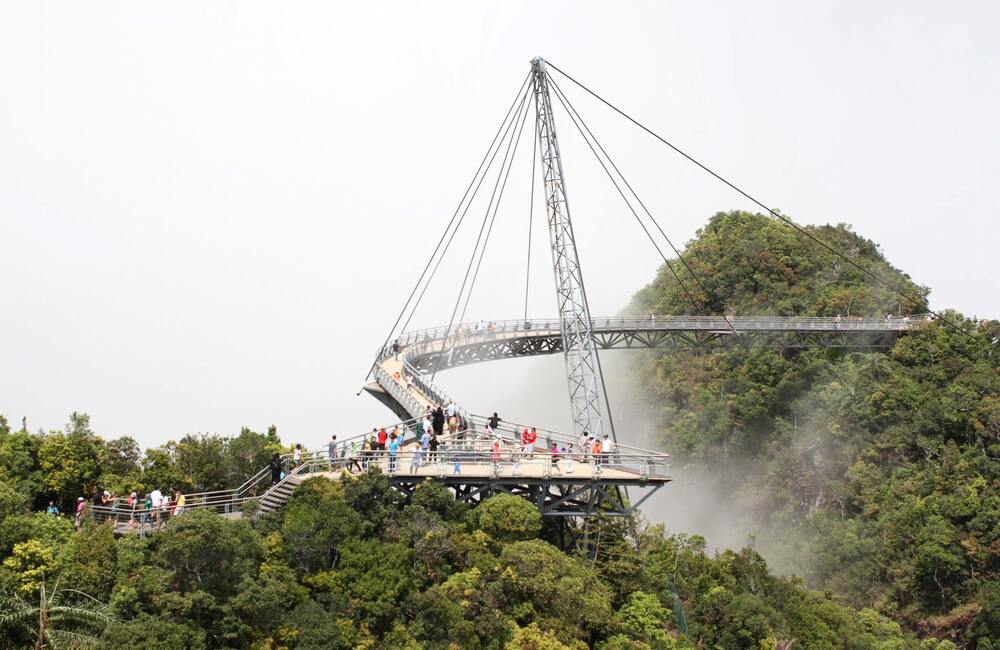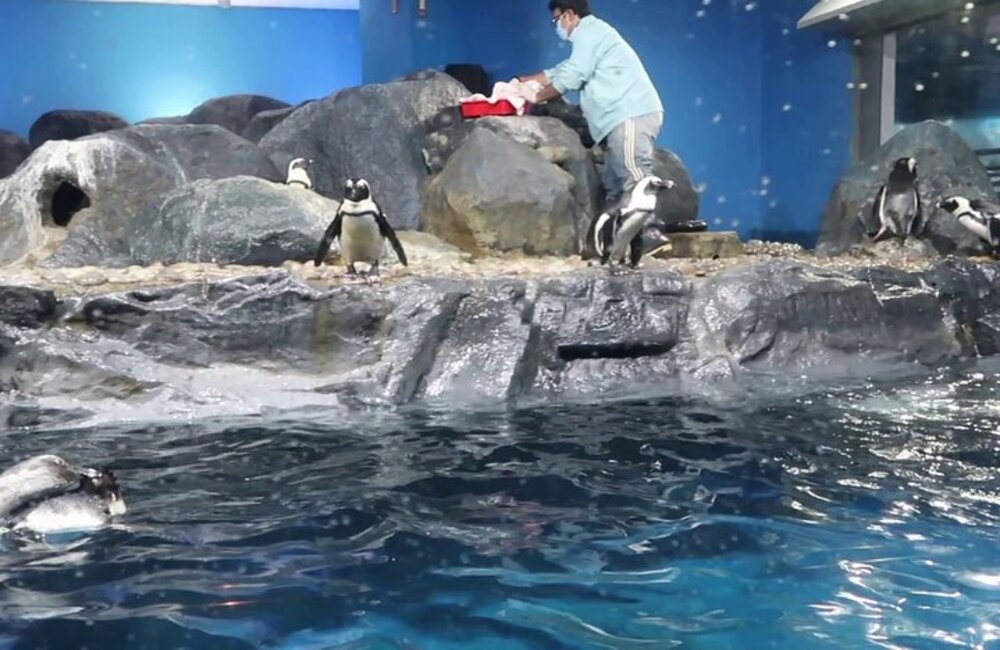Langkawi, the Jewel of Kedah
Langkawi is a duty-free island and an archipelago of 99 islands.
Langkawi, the Jewel of Kedah
The name Langkawi is thought to have existed in the early 15th century, According to one interpretation, Langkawi means the island of the reddish brown eagle, the Brahminy kite in everyday Malay. The Malay word for eagle is helang (abbreviated in everyday language to lang), and kawi is a red stone used as chalk to mark goods. This interpretation is used to create a landmark sculpture of an eagle as a symbol of Langkawi in Dataran Helang. Some also argue that Langkawi means “many beautiful islands”, rarely is a Sanskrit word meaning “beautiful” while wi means “many”.
History
The island of Langkawi became the property of Great Britain through the Bangkok Treaty of 1909 or the Anglo-Siamese Treaty of 1909. Ralph Spencer Paget, the British Ambassador to Siam, played an important role in saving the island from further Siamese conquest. During the negotiations between Britain and Siam, he had informed Edward Henry Strobel, the Foreign Affairs Adviser of the Siamese Government, that the British still wanted Langkawi Island to belong to the British. As a result on 10 March 1909 the Bangkok Treaty of 1909 was signed giving the rights of the island to Britain.
Natural surroundings
Langkawi is renowned for its breathtaking natural beauty, earning its reputation as the “Jewel of Kedah.” The island is part of an archipelago of 99 islands in the Andaman Sea, blessed with a mix of pristine beaches, lush rainforests, and dramatic limestone formations. Its coastline features long stretches of white sand, such as Pantai Cenang and Tanjung Rhu, where turquoise waters meet tropical greenery. Inland, dense jungles and paddy fields reveal a more tranquil side of island life.
The island’s most remarkable feature is its rich geological heritage, recognized by UNESCO as part of the Global Geopark Network. Visitors can explore the Kilim Karst Geoforest Park with its mangrove swamps, limestone cliffs, and caves filled with ancient stalactites, or take the Langkawi SkyCab for panoramic views of the surrounding islands and sea. The region’s warm, humid climate sustains diverse wildlife, including hornbills, macaques, and monitor lizards. Together, these elements make Langkawi not only a beach destination but also a haven for nature and eco-adventure enthusiasts.
Culture
Langkawi, while best known for its natural beauty, is also rich in cultural heritage shaped by Malay traditions, seafaring history, and local legends. The island’s culture is deeply influenced by the ethnic Malay population, with customs, festivals, and daily life reflecting centuries of maritime trade and coastal living. Traditional arts such as weaving, batik making, and handicrafts are still practiced in local villages, offering visitors a glimpse into the island’s artisanal heritage.
Religious and cultural sites are scattered across the island. Kota Mahsuri, a historical complex, preserves the legend of Mahsuri, a 19th-century woman whose story embodies themes of love, betrayal, and justice, and remains a cornerstone of Langkawi’s identity. The island also features mosques, such as the Al-Hana Mosque, and cultural centers where traditional Malay music, dance, and ceremonies are showcased.
Festivals and local traditions are integral to Langkawi life. Events like Hari Raya Aidilfitri, Hari Raya Haji, and other Islamic celebrations are observed with communal gatherings, traditional feasts, and cultural performances. In addition, Langkawi hosts smaller local festivals celebrating its fishing heritage, agricultural cycles, and folklore, allowing visitors to experience the rhythms of daily life and the warmth of its communities.
The island’s culture is also reflected in its cuisine, which blends Malay, Thai, and indigenous influences. Dishes featuring fresh seafood, local herbs, and spices offer a taste of Langkawi’s coastal heritage, while traditional markets provide insight into everyday life. Langkawi is thus a place where history, legend, and tradition converge, giving visitors a chance to experience the unique cultural fabric of Malaysia’s northwestern archipelago.
Transportation
From Kuah jetty, there are high -speed ferry facilities connecting Satun and Ko Lipe in southern Thailand, Pulau Payar, Penang, Kuala Kedah, and Kuala Perlis in mainland Peninsular Malaysia. Langkawi International Airport is one of seven airports in Malaysia that connects Langkawi with Kuala Lumpur, Singapore, Penang and Subang.
Get In
Langkawi is one of the best places to visit if you want to experience some adventure. And to get there is actually quite easy. It is best that you prepare a itinerary to Langkawi.
The Jewel of Kedah
Langkawi at a glance
![]()
- Country: Malaysia
- Area: 466.0 km2
- Population: 94,138
Highlights
- Dataran Helang: The icon of Langkawi, Eagle Square or locally known as Dataran Lang is the home for Langkawi’s giant statue of an eagle.
- Sky Bridge: 125-metre (410 ft) curved pedestrian cable-stayed bridge in Malaysia, completed in 2005. The bridge deck is 660 metres (2,170 ft) above sea level at the peak of Gunung Mat Cincang on Pulau Langkawi, the main island of the Langkawi archipelago in Kedah
- Underwater World: It is built to raise awareness on the importance of conserving our precious aquatic life forms, thus creating understanding of the deep and an inseparable bond between man and nature.
- Telaga Tujuh:is a waterfall that originates from seven springs, flowing into seven natural wells. The discharge from the first well forms a small river and passes into the other well. It is located on the slopes of Mount Mat Chinchang towards Burau Bay.
- Skycab Langkawi: It provides an aerial link from the Oriental Village at Teluk Burau to the peak of Gunung Machinchang, which is also the location of the Langkawi Sky Bridge.
- Crocodile Adventure: It specially designed and landscaped with beautiful plantation and greenery, making it look like a recreation park. Different species of crocodiles are kept in specific ponds, where visitors can have a thorough look at the crocodiles while walking around.
Dos and Don’ts
- Respect Local Customs: Dress modestly when away from the beach, especially in villages or religious sites.
- Enjoy Duty-Free Shopping: Langkawi is a duty-free island—great for chocolates, alcohol, and souvenirs at lower prices.
- Use Cash for Small Purchases: While cards are accepted in hotels and bigger restaurants, many stalls and local shops prefer cash.
- Explore Beyond the Beaches: Visit attractions like Langkawi Sky Bridge, Kilim Karst Geoforest Park, and local night markets.
- Protect Nature: Dispose of trash properly and be mindful when snorkeling, diving, or visiting mangroves.
- Sunbathe Topless or Nude: Public nudity is illegal and considered highly disrespectful.
- Don’t drink Alcohol in Public Places: While alcohol is duty-free, drinking in public outside resorts, bars, or restaurants can cause offense.
- Don’t Ignore Safety Warnings: Some beaches have jellyfish or strong currents—observe safety signs and lifeguard instructions.
- Don’t Disturb Wildlife: Don’t feed monkeys or other animals—they can become aggressive and dependent on humans.
- Don’t Forget Local Etiquette: Avoid public displays of affection in villages and religious areas.
